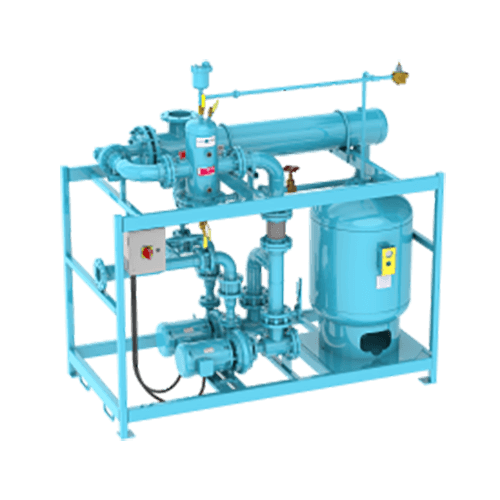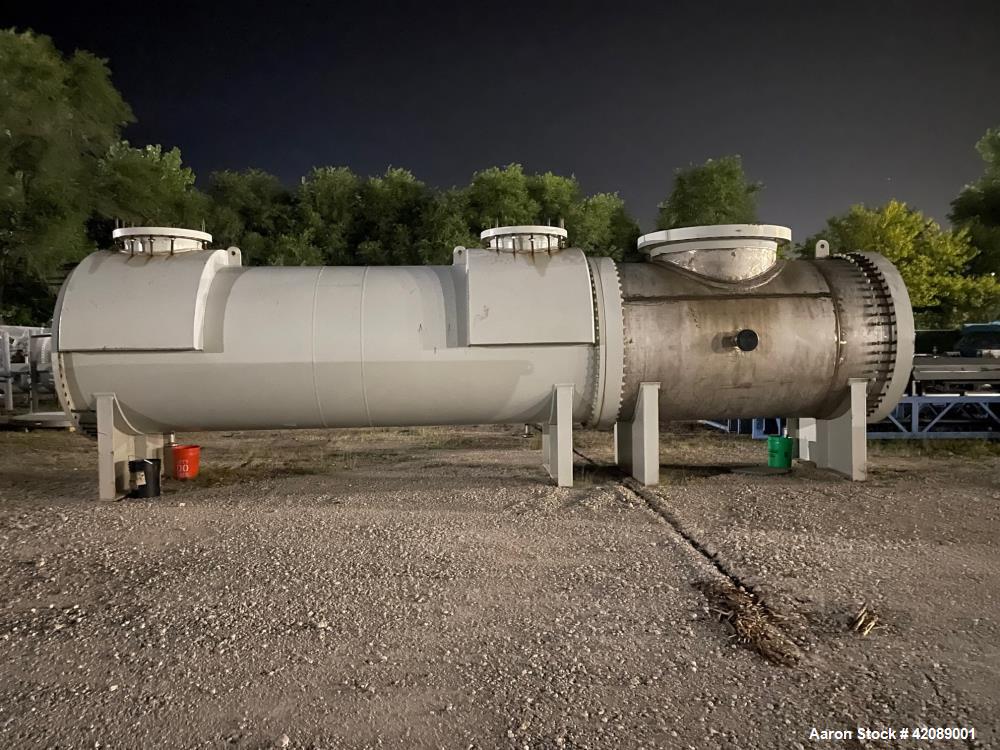The Function of Heat Transfer Systems in Sustainable Power Solutions for the Future
Heat transfer systems are vital in the quest for lasting energy services. They enhance thermal energy management, enhancing the efficiency of renewable modern technologies. By employing devices like transmission, radiation, and convection, these systems decrease power losses. Their role in solar thermal and geothermal applications is particularly considerable. As innovations arise, the possibility for further innovations increases essential inquiries concerning future energy techniques. What growths will form the landscape of lasting power?
Recognizing Heat Transfer Solutions

The Significance of Thermal Power Administration
Effective thermal energy monitoring is necessary for taking full advantage of power performance and lessening waste in numerous systems. By controling temperature level and optimizing Heat transfer processes, companies can noticeably reduce energy intake and functional prices. Effective administration entails the implementation of sophisticated modern technologies and practices that keep an eye on and manage thermal problems within systems, making certain that power resources are utilized successfully. Furthermore, appropriate thermal energy administration contributes to decreasing greenhouse gas exhausts, aligning with global sustainability objectives. It additionally enhances system integrity and efficiency, leading to improved item high quality and longer equipment life-span. Eventually, focusing on thermal energy administration is a vital step towards developing a lot more sustainable energy options and fostering a responsible strategy to energy intake in industrial and property contexts.
Applications of Heat Transfer in Renewable Resource
While numerous renewable resource resources guarantee sustainability, the reliable application of Heat transfer plays an essential function in their effectiveness. In wind power systems, Heat transfer is used for generator element air conditioning, enhancing performance and long life. Geothermal power counts on reliable Heat exchange in between the earth's subsurface and the liquid distributing in the system, maximizing power removal. Biomass power processes also profit from Heat transfer, as it helps in converting natural products into useful fuel via pyrolysis and gasification. Additionally, in hydropower, maintaining excellent temperature levels in reservoirs can boost energy result. Each of these applications shows the essential importance of Heat transfer systems in boosting renewable resource modern technologies, eventually adding to a much more sustainable power future.
Enhancing Solar Thermal Power Effectiveness
As solar thermal power systems remain to advance, enhancing their performance has come to be essential for taking full advantage of power result. Advances in Heat transfer innovations, such as improved thermal storage materials and ingenious Heat exchangers, play a considerable role in improving efficiency. By utilizing sophisticated products that have exceptional thermal conductivity, systems can capture and move Heat more successfully. Furthermore, incorporating monitoring systems that adhere to the sun's course assurances that enthusiasts receive suitable solar direct exposure throughout the day. Utilizing nanotechnology in solar absorbers can additionally increase energy absorption prices. Furthermore, integrating automatic control systems assists manage and control temperatures power distribution efficiently, bring about reduced losses and enhanced overall system effectiveness. These enhancements lead the way for more sustainable solar thermal energy solutions in the future.
Geothermal Heating: A Sustainable Option
Geothermal home heating provides a sensible choice for lasting energy, using considerable environmental advantages via lowered greenhouse gas exhausts. Its effectiveness and cost-effectiveness make it an appealing option to conventional heater. Challenges connected to implementation has to be addressed to optimize its prospective influence.
Ecological Advantages of Geothermal
Although standard home heating techniques contribute substantially to greenhouse gas emissions, geothermal home heating offers a compelling alternative that reduces ecological impact. By harnessing the Planet's interior Heat, geothermal systems use a renewable resource source, significantly minimizing reliance on fossil gas. This approach generates marginal carbon exhausts, making it a cleaner option for business and household heating. Additionally, geothermal systems advertise energy effectiveness, as they require much less power contrasted to traditional heater. DVS Heat Transfer Systems. The use of geothermal power additionally helps in decreasing air contamination, improving regional air high quality and public wellness. As a lasting This Site solution, geothermal heating supports climate change mitigation initiatives, placing itself as a vital element in the shift towards a greener future
Efficiency and Cost-Effectiveness
Exactly how does geothermal home heating determine up in terms of effectiveness and cost-effectiveness compared to traditional heating unit? Geothermal home heating shows premium performance, frequently achieving a coefficient of performance (POLICE OFFICER) of 3 to 5, implying it creates three to five devices of Heat for every system of power consumed. This effectiveness equates right into lower operating expense, particularly in areas with steady geothermal resources. Initial installment expenses can be greater than conventional systems; nevertheless, lasting financial savings on power bills and decreased maintenance expenses can offset these upfront investments. In addition, numerous governments incentivize geothermal systems through rebates and tax credit scores, improving their cost-effectiveness. On the whole, geothermal home heating becomes a lasting and financially feasible alternative to more conventional home heating remedies.
Application Challenges and Solutions
Countless challenges can restrain the widespread implementation of geothermal furnace, regardless of their clear advantages as a sustainable energy solution. High preliminary installation prices typically deter house owners and investors, making financing a substantial barrier. In addition, the geographical restrictions of appropriate Learn More geothermal sites restrict access in specific regions. Local regulations and permitting procedures can also make complex job advancement, causing hold-ups. Public understanding and understanding of geothermal systems continue to be reduced, hindering approval. To deal with these challenges, targeted education campaigns can improve public expertise, while government incentives could reduce monetary worries. Collaborating with neighborhood authorities to simplify guidelines might assist in smoother project approvals, eventually promoting the adoption of geothermal heating as a sensible, lasting energy choice.
Developments in Heat Transfer Technologies
Technologies in Heat transfer modern technologies play a vital role in improving power effectiveness and sustainability. Advanced Heat exchangers and phase change products are at the forefront of these developments, supplying considerable improvements in thermal administration. These modern technologies not only enhance power use but likewise add to minimizing ecological effect in various applications.
Advanced Heat Exchangers
Advanced Heat exchangers play a crucial role in improving energy effectiveness across different applications in sustainable energy services. These gadgets help with the transfer of Heat in between two or even more fluids, markedly decreasing power consumption in processes such as industrial heating, cooling, and power generation. Developments in materials and layout, such as the usage of nanofluids and small arrangements, have caused enhanced thermal efficiency and lowered size requirements. In addition, developments in electronic surveillance and control systems permit for optimized procedure, additional raising performance. By minimizing waste Heat and optimizing energy recuperation, advanced Heat exchangers add to lower carbon footprints and support the change toward eco-friendly innovations. Their continued advancement is essential for achieving global power sustainability objectives.
Phase Modification Products
The combination of stage modification products (PCMs) right into Heat transfer modern technologies represents a considerable innovation in energy monitoring and performance. PCMs absorb and release thermal power during their phase adjustments, allowing effective temperature law in structure products and energy systems. By storing excess Heat during top periods and releasing it when demand boosts, PCMs add to pack moving and power conservation - DVS Heat Transfer Systems. This capability enhances the performance of renewable resource systems, especially in solar thermal applications. Furthermore, PCMs can enhance the thermal convenience of interior settings, reducing dependence on traditional home heating and cooling down approaches. As innovations in PCM formulas proceed to emerge, their role in lasting power remedies is poised to grow, offering appealing avenues for future research study and application

Future Potential Customers for Heat Transfer in Lasting Energy
As the need for lasting energy solutions proceeds to climb, the role of Heat transfer systems is coming to be increasingly critical in shaping future innovations. Technologies in materials and styles are anticipated to enhance effectiveness in Heat transfer, reducing power losses in different applications. The assimilation of sophisticated thermal storage space systems, such as phase modification materials and thermochemical storage space, will allow better monitoring of energy sources. Study right into nanofluids and biomimetic Heat exchangers may even more optimize thermal efficiency. The adoption of wise technologies will allow for real-time monitoring and flexible control of Heat transfer procedures. These improvements are poised to significantly add to the total performance and sustainability of power systems, leading the way for a more energy-efficient future.
Frequently Asked Questions
Just How Can People Execute Heat Transfer Equipment in your home?

Individuals can execute Heat transfer systems at home by mounting energy-efficient devices, using radiant heat, and maximizing insulation. These procedures enhance energy efficiency, minimize prices, and promote lasting methods in domestic environments.

What Are the Prices Connected With Mounting Heat Transfer Equipments?
The costs connected with installing Heat transfer systems differ widely, typically including devices, installment labor, and upkeep. Variables such as system kind, home dimension, and regional guidelines substantially affect the total expenditure entailed.
Are There Federal Government Incentives for Heat Transfer System Installations?
Federal government incentives for Heat transfer system setups differ by area and can include tax discounts, credit ratings, and gives. These discover this financial advantages intend to motivate adoption, inevitably advertising energy efficiency and decreasing ecological effect within communities.
Just How Do Heat Transfer Equipments Effect Energy Costs?
Heat transfer systems especially influence power costs by maximizing power efficiency. By improving the transfer of Heat, these systems minimize power consumption, bring about lower energy prices and developing a much more lasting approach to power management.
What Upkeep Is Required for Heat Transfer Equipments?
Maintenance for Heat transfer systems consists of routine evaluations, cleaning of components, examining liquid levels, ensuring correct insulation, and replacing worn components. These tasks aid keep performance, prevent malfunctions, and lengthen the system's operational life expectancy.
These systems facilitate the motion of thermal energy from one medium to one more, enabling the transfer of Heat for energy, cooling, or heating generation functions. Geothermal power counts on reliable Heat exchange between the earth's subsurface and the liquid flowing in the system, optimizing energy extraction. Additionally, geothermal systems promote energy effectiveness, as they call for much less power contrasted to standard home heating systems. Advanced Heat exchangers play a vital function in enhancing energy effectiveness throughout different applications in lasting energy remedies. Heat transfer systems significantly influence power costs by maximizing energy performance.